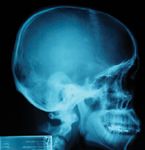Beware of bisphosphonates and jaw disorder
Although jaw osteonecrosis is a rare complication of bisphosphonate therapy, the sheer numbers of bisphonphonate Rxs filled annually suggest this rare side effect may affect thousands of patients. Bisphosphonates are indicated for treating hypercalcemia of malignancy, multiple myeloma, bone metastases of solid tumors and Paget's disease, and for the treatment and prevention of osteoporosis.

Patients with bisphonphonate-related osteonecrosis of the jaw (BRON) complain of jaw pain and trouble chewing. The jaw may appear swollen and inflamed on one side, and sometimes bone becomes exposed. Osteonecrosis means bone death. It can be very difficult to treat.
The American Association of Oral and Maxillofacial Surgeons (AAOMS) recently issued a position paper on BRON. Earlier this year bisphosphonate drug labeling (both oral and intravenous) was modified to warn about the possibility of this complication. In addition, the American Dental Association Council on Scientific Affairs has issued recommendations for dental management during oral bisphosphonate therapy.
With intravenous bisphosphonate therapy, there are three possible management scenarios. Ideally, before a patient is started on therapy, Marx commented, "he or she should get the mouth cleaned up. The dentist can take out teeth that are bad; cure gum disease, treat dental disease; 75% of BRON is associated with invasive dental procedures."
The second scenario occurs after a patient has been on intravenous bisphosphonate therapy for some time. "We then advise avoiding all invasive procedures, if possible. Don't take teeth out; don't put dental implants in, don't do gum surgery unless there's no other recourse."
The third scenario is when the patient already has exposed bone, i.e., osteonecrosis of the jaw. "In those cases, we advise a nonsurgical approach: antibiotics and chlorhexidine," said Marx. "With the oral bisphosphonates, the problem is different," he explained. "The exposed bone problem is less severe; it's more treatable and predictable."
Marx's research has substantiated that BRON is related to oral aminobisphosphonates-bisphosphonates that contain nitrogen. It has been reported with alendronate (Fosamax, Merck) and risedronate (Actonel, Procter & Gamble). He noted that ibandronate (Boniva, Roche) is probably too new to demonstrate BRON, although it, too, is an oral aminobisphosphonate.
It is also time-related, Marx commented. "The first three years on a bisphosphonate, there is little, if any, problem. After three years, you start seeing an increase in the number and severity of cases." Since concomitant corticosteroid therapy use also increases risk, Marx recommends judicious drug choice and length of therapy. But when oral bisphosphonate therapy exceeds three years, or has occurred with corticosteroid therapy, the AAOMS paper recommends greater than a three-month holiday before invasive dental procedures. "If you stop the oral bisphosphonate-that's the thing to do-the bone recovers," said Marx.
While the guidelines do not predict the likelihood of BRON from dental surgery, Marx's research-to be published in the Journal of Oral Maxillofacial Surgery-and his soon-to-be-released textbook, Oral and Intravenous Bisphosphonate-Induced Osteonecrosis of the Jaws: History, Etiology, Prevention, and Treatment, describe using the C-terminal telopeptide concentration test (CTx) in identifying risk. He recommends that, when oral bisphosphonate therapy has been used for more than three years, patients be tested prior to an invasive dental procedure to determine risk, and, if necessary, to delay a procedure while the bone recovers.